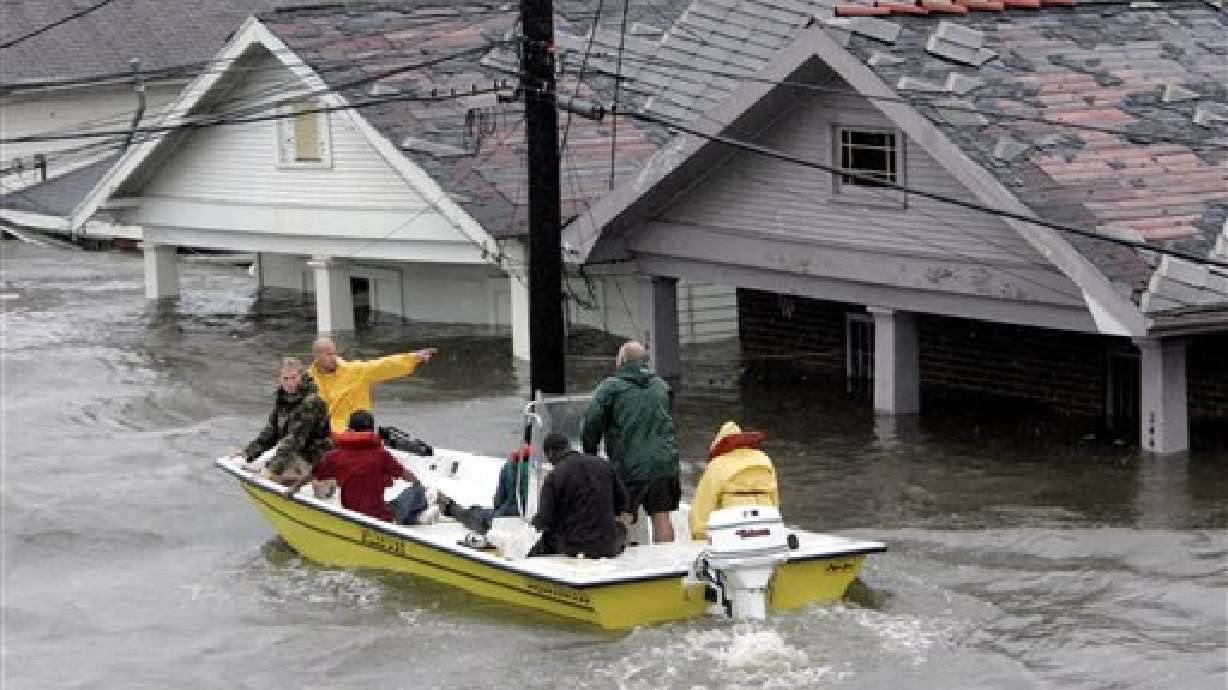Estimated read time: 3-4 minutes
This archived news story is available only for your personal, non-commercial use. Information in the story may be outdated or superseded by additional information. Reading or replaying the story in its archived form does not constitute a republication of the story.
SALT LAKE CITY (AP) -- Some refugees of hurricanes Katrina and Rita who came to Utah could find their free housing benefits running out by March 1, federal officials have told the state.
Hurricane survivors may be eligible for up to 18 months of extended rent assistance. But they must apply directly to the Federal Emergency Management Administration (FEMA) by Jan. 11.
"The criteria has a lot to do with where you evacuated from. If your house is buried and under sludge, or no longer exists at all, then you are likely eligible for rental assistance," said FEMA spokeswoman Nicol Andrews.
Derek Jensen, Utah Department of Public Safety spokesman, said, "We'll do what we can to make sure it's a smooth transition for people." The state has set up a 24-person case management committee to track evacuees and map out their long-term needs.
The Calvary Baptist Church also is working with ministers along the Wasatch Front to set up survivor support groups similar to one that meets every Friday in Salt Lake City.
But at the group's most recent meeting, evacuees expressed frustration about mixed messages from FEMA and local authorities.
Last week, Salt Lake City's Housing Authority mistakenly sent 92 families letters saying that if they didn't supply proof of residence in hurricane-ravaged areas by Nov. 18, their December rent would not be paid. The letters have since been rescinded.
Unknown is the expiration date on other aid, such as Medicaid, welfare and food stamps. Utah Transit Authority bus passes last only through December, and few evacuees have found jobs.
Hurricane Katrina hit the Gulf Coast on Aug. 28. The New Orleans levees broke a day later, and the first group of evacuees arrived in Utah on Sept. 3. Hurricane Rita struck the Gulf Coast along the Texas-Louisiana border in late September, also prompting widespread evacuations.
But to date, Utah has no estimate for costs accrued in the relief effort. Nor have state officials accounted for all the men, women and children in exile along the Wasatch Front. Jensen said local housing authorities report that of the 414 Utah evacuees given rent assistance, 406 remain in the state.
But he acknowledged that number could be wrong because some evacuees have moved out without notifying the state. In addition, he said, an additional 170 people are rumored to have self-evacuated to Ogden with help from the American Red Cross.
"They might have shown up and left. We're trying to track that down," Jensen said. "We'll freely admit this hasn't been a perfect process. I don't know how you can expect it to be. This has been a pretty unprecedented event for our state and the nation."
FEMA's announcement to end subsidies Dec. 1 to an estimated 53,000 evacuees living in hotels in Texas, Louisiana, Georgia and Mississippi has drawn fire from officials in those states who warn it could trigger an intractable housing crisis.
Andrews said the new deadlines were imposed to help FEMA better track survivors and move them into permanent housing. To date, 2.5 million people have registered with the agency, which has dispensed $4.2 billion in aid.
------
Information from: The Salt Lake Tribune, http://www.sltrib.com
(Copyright 2005 by The Associated Press. All Rights Reserved.)








